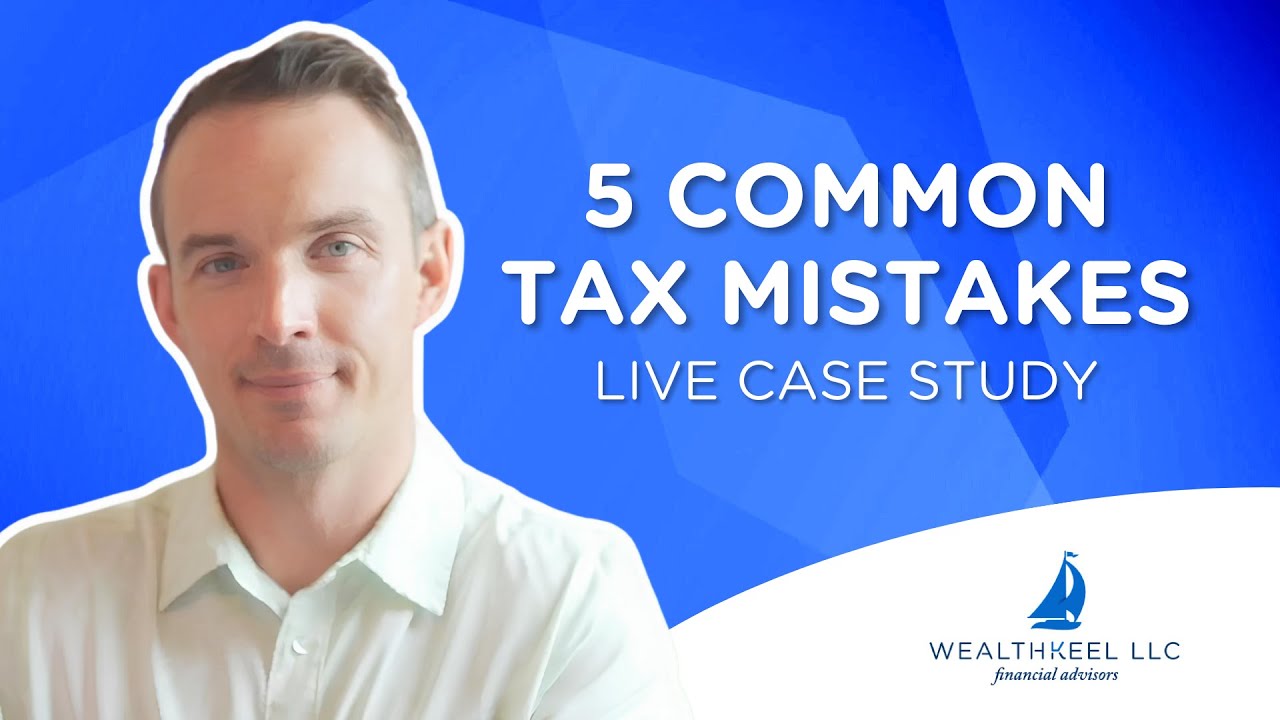Navigating Tax Planning: Five Common Mistakes That Could Cost You
Whether you’re a physician, high-income professional, or simply a taxpayer looking to optimize your returns, understanding the common pitfalls in tax planning is crucial. Taxes, as we know, are intricate and can profoundly influence your financial health, especially when you’re in a higher income bracket. This article dives into five typical tax mistakes, utilizing practical case studies and simulations through tax planning software to provide you with actionable insights. We cover everything from retirement plan contributions to charitable giving, HSAs, 529 plans, and strategic tax planning for future savings.
🎥 Prefer video over the blog? We’ve got you covered!
Watch our YouTube video as we dissect this blog post for you 🎥
1. Underutilizing Retirement Plan Contributions
One of the most substantial benefits available to taxpayers is the ability to contribute to retirement plans like 401(k)s or 403(b)s, which can significantly reduce taxable income. For instance, did you know that you could potentially contribute up to $223,000 depending on your employment status and the type of plan? Unfortunately, many fail to maximize these contributions.
Case Study (Live in YouTube Video):
Consider a dual-physician household with a total income of $687,000. If they make no retirement contributions, they face a tax liability of approximately $175,000. By contributing $23,000, they could reduce their tax by $8,000, lowering their liability to $167,000. Increasing their contribution to $69,000 could further reduce their tax to around $147,000, saving an impressive $28,000. The lesson here is clear: maximizing your retirement contributions is an effective strategy to reduce your tax bill significantly.
2. Overlooking Charitable Contributions
Charitable giving not only supports worthy causes but also offers tax deductions that can improve your financial position. However, many high earners miss out on these benefits by either failing to document their contributions adequately or underestimating the tax implications.
Strategy and Documentation:
Tracking your charitable contributions can make a substantial difference. Using itemized deductions rather than standard deductions can be beneficial if your charitable giving, along with other deductible expenses, exceeds the standard deduction threshold. Employing strategies like bunching contributions through Donor-Advised Funds (DAF) can further enhance the tax benefits.
3. Ignoring the Benefits of Health Savings Accounts (HSAs)
HSAs are remarkably tax-efficient and are an excellent way for individuals with high-deductible health plans to set money aside for medical expenses. Contributions are made pre-tax, the growth is tax-deferred, and withdrawals for qualified medical expenses are tax-free.
Case Illustration (Live in YouTube Video):
If a family contributes the maximum of $8,300 to an HSA, they could save about $3,000 in taxes compared to a scenario without any HSA contributions. The key is to pay current minor medical expenses out of pocket and allow the HSA funds to grow, leveraging the compound interest over time.
4. Neglecting 529 College Savings Plans
While the 529 college savings plan offers significant state tax deductions and in some cases credits, it is underutilized by many who might benefit considerably from it.
Utilizing State Benefits (Live in YouTube Video):
It’s vital to understand the specific rules and benefits offered by your state. For instance, states like New York offer up to a $10,000 deduction for married couples filing jointly, which can reduce your state tax bill by about $700 annually. Knowing your state’s rules can lead to substantial savings, particularly if your state offers credits versus mere deductions.
5. Not Planning for Future Taxes with Retirement Savings
Future tax planning is critical, especially for high earners who need to strategize their income sources in retirement to optimize tax efficiency.
Backdoor Roth IRA Strategy:
A Roth IRA, especially the backdoor Roth IRA, is a superb tool for high-income earners. This strategy involves making non-deductible contributions to a traditional IRA and then converting it to a Roth IRA. The benefit is that the growth and withdrawals from a Roth IRA do not incur any taxes, which could be highly beneficial if tax rates rise in the future.
Conclusion: Enhancing Your Tax Efficiency
Understanding and navigating these common tax mistakes can yield significant financial benefits. By maximizing retirement contributions, effectively utilizing HSAs, taking advantage of state tax breaks through 529 plans, strategically managing charitable contributions, and planning for future taxes with tools like the backdoor Roth IRA, you can enhance your tax efficiency dramatically. Each plan has its nuances and benefits, tailored to different financial situations and goals. Engaging with these strategies will not only improve your current tax situation but also bolster your financial health in the long term
Looking for a more thorough all-in-one spot for your financial life? Check out our free eBook: A Doctor’s Prescription to Comprehensive Financial Wellness [Yes, it will ask for your email 😉]
